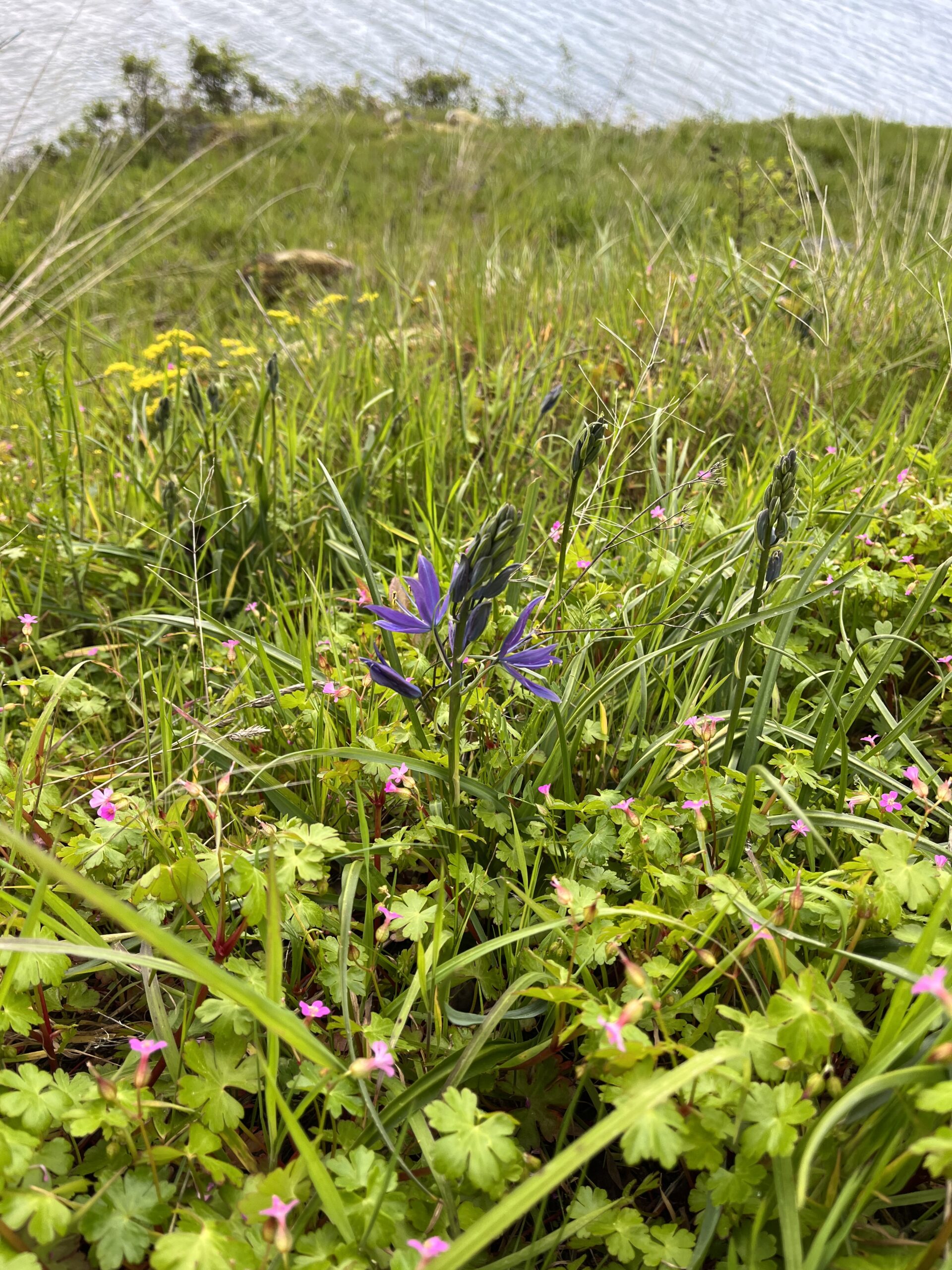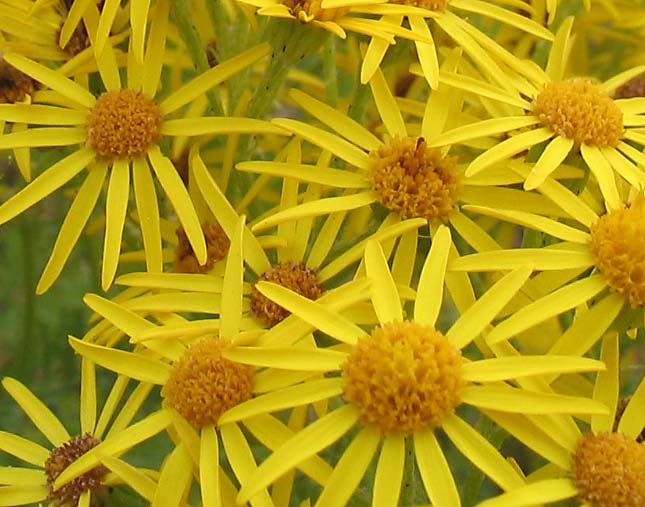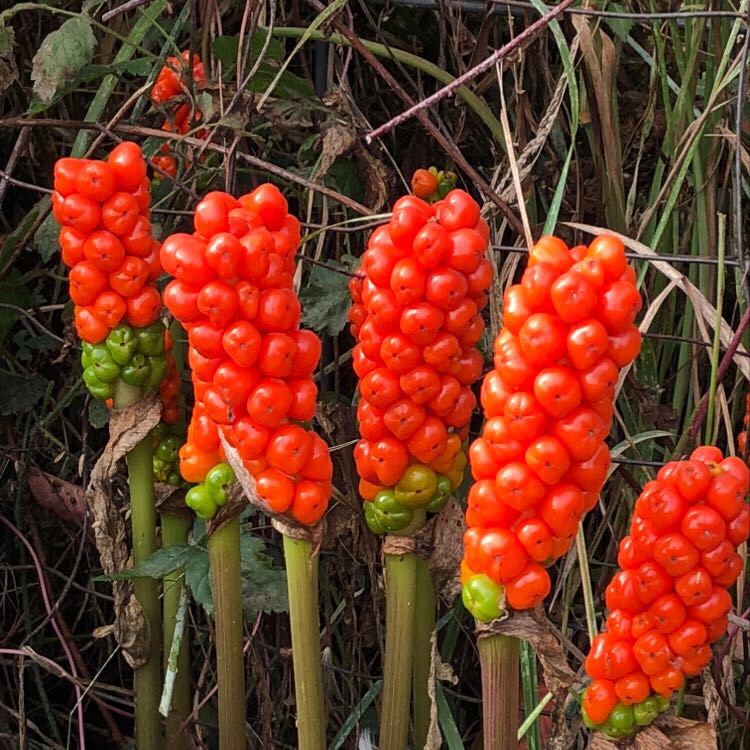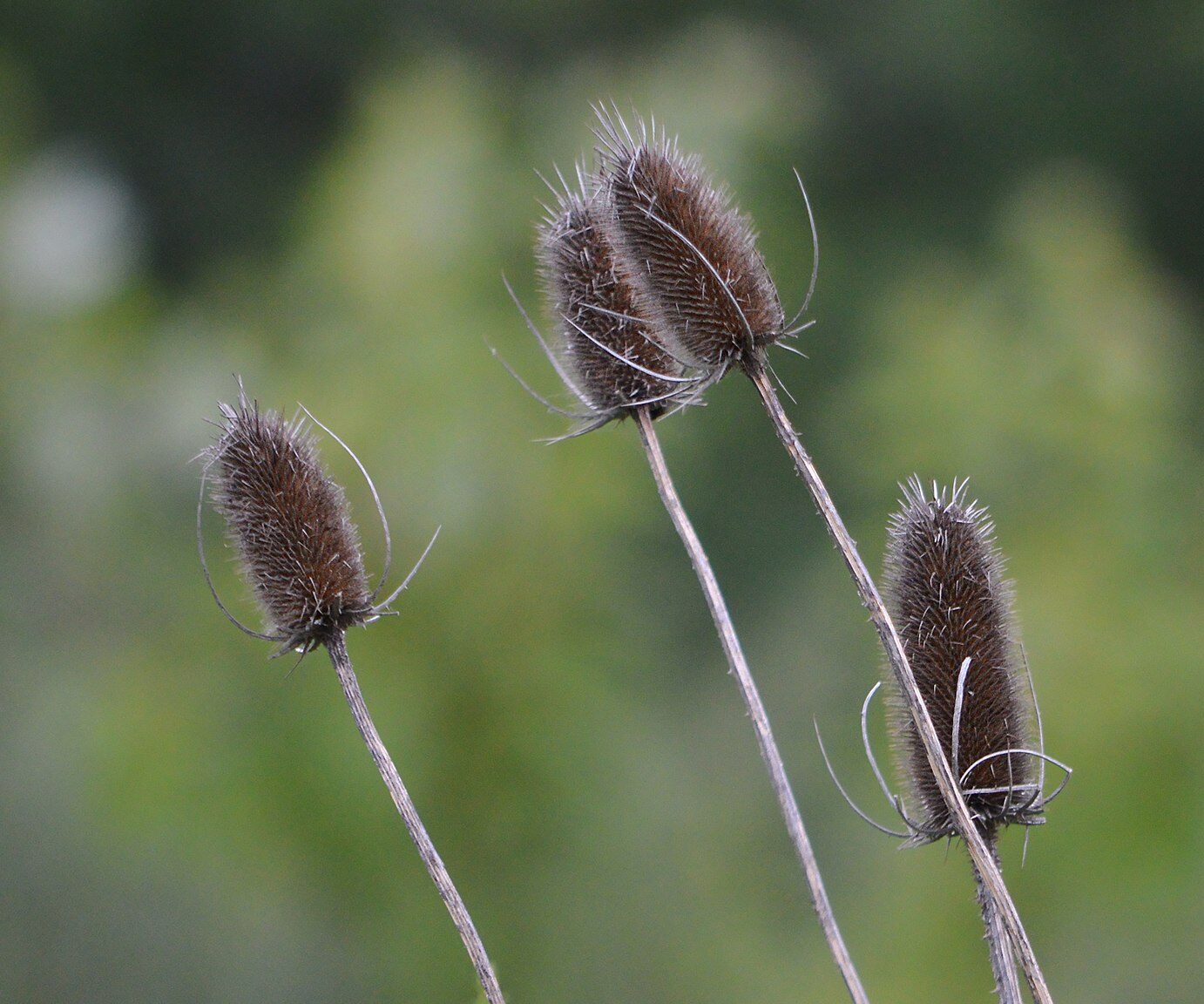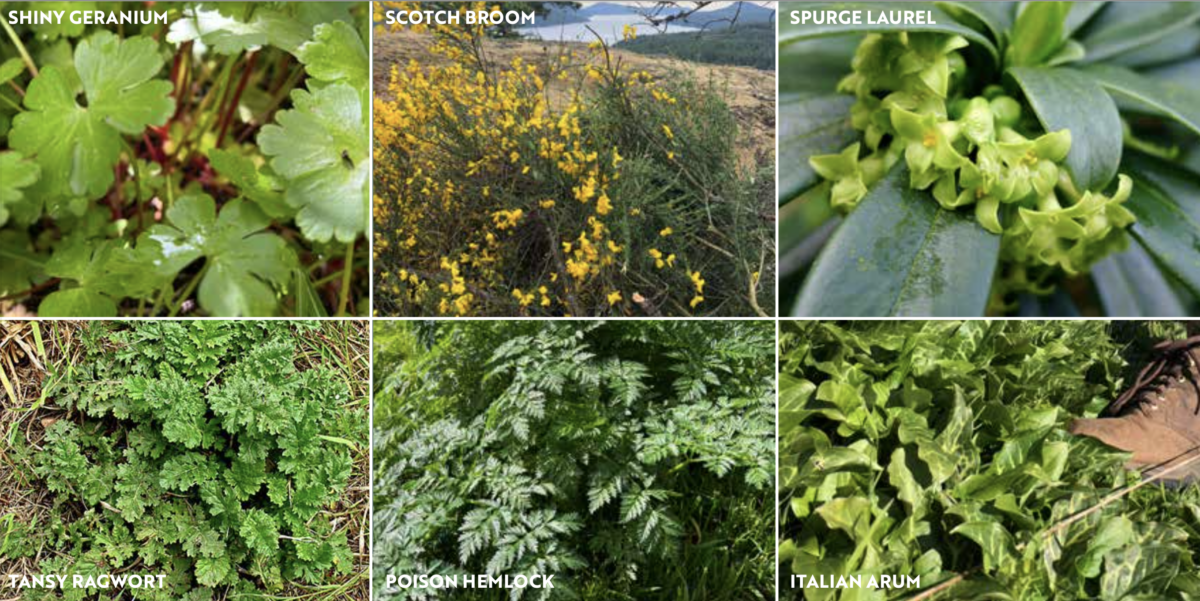
Six of San Juan County’s Most Notorious Plant Invaders
Notes on weeds from Jason Ontjes
Program Coordinator, San Juan County Noxious Weed Control Program
The top non-native invasive plant species that I would single out would partly depend on the island and the season, but in the spring and early summer my mind is centered on:
-
- Shiny geranium, Geranium lucidum, which is beginning to run rampant on Orcas, especially along Olga Road as you climb Flaherty’s Hill. It’s also becoming a problem over in the View Haven neighborhood, and we just discovered the first patch on San Juan Island near the ferry lines in Friday Harbor. I fear more is on the way. I think deer are aiding and abetting its spread.
- Scotch broom, Cytisus scoparius, obviously a menace in much of western Washington, and considered toxic (deer seem to browse it, however) and a fire risk for property owners. Gorse, because of its limited range to Olga and Doe Bay, does not make the list but is even more flammable.
- Spurge laurel, Daphne laureola. This evergreen shrub is pretty (an escaped ornamental) but is quite toxic and has come to dominate the understory of forests in a few places (Mount Dallas, Camp Four Winds, White Beach, Friday Harbor, Beaverton Marsh Preserve). Birds help to spread it.
- Tansy ragwort, Jacobaea vulgaris, is perhaps the County’s poster child of noxious weeds, given its potential impact on agriculture and its ability to poison livestock. A biennial, its first-year rosettes may be removed successfully by digging out ALL the roots, but any remainder of roots in the soil risks re-sprouts of new plants. Easier to pull it in thebolting stage (year 2), preferably before flower so you don’t have to worry as much about after-ripening seeds once pulled. We often see tansy ragwort appear whenever there is forest-disturbing, land-clearing activity.
- Poison hemlock, Conium maculatum, perhaps our single most dangerous plant, other than native water hemlock (found at Sportsman’s Lake), and abundant in a few places on Lopez, less so on San Juan and Orcas. This one gets around easily from contaminated soil and perhaps equipment, and is often mistaken for wild carrot (at least one case of accidental poisoning because of that mistaken identity). Even the residues (dried remains) are still toxic up to two years later. Children have been poisoned using the hollow canes as pea shooters (do kids even do that anymore?). A menace!
- Italian arum, Arum italicum, is one of the toughest plants we deal with as far as control difficulty. If infestations are small, digging them out VERY CAREFULLY by the roots is the best known way to handle it. (A land manager on Lopez reports havinghad success with fabric mulch and wood chips as well, but likely the root structures are still alive, years later). If it is in your yard and not spreading, I suggest leaving it alone entirely. Just pick the fruits before they ripen (another one spread by birds and perhaps rodents and ants).
- Common teasel, Dipsacus fullonum, is an attractive, thistle-like biennial this is not poisonous but degrades meadows, pastures, roadsides, and forest edges. It is on the move on Orcas, thanks in part to contaminated fill and mowing equipment. A very useful and interesting plant, however, which may derive some of its nutrition by trappinginsects in cups of water developed thanks to pairs of clasping leaves on the stem.
- English holly, Ilex aquifolium, can escape formal landscapes and become invasive in forested settings, thanks in part to distribution of holly fruit by birds. It is listed as a “species of concern” in San Juan County but is not required to be controlled or eradicated. This “Best Management Practices” bulletin from King County provides good background information on the history, impacts, and control of English holly in Northwest Washington.
- Meadow knapweed, Centaurea x gerstlaueri, is another one that makes me lose sleep, and one you’re familiar with from Coffelt’s Farm. If you take a drive down Fisherman Bay Road on Lopez, there is perhaps about 6,000 feet of roadside covered inthe stuff, and it expands its range every year. You can find it on San Juan as well in a few places, which also has spotted knapweed (C. stoebe).
- Eurasian milfoil, Myriophyllum spicatum, and its hybrid with the native M. sibiricum, is a big deal with the state Department of Ecology right now, and likely got introduced into our county from a contaminated boat trailer from the mainland. I am not sure it would be suitable to put it on your postcard, however. Just an aquatic species, obviously.
- Honorable mentions: Tree of heaven (Ailanthus altissima), Canada thistle, bull thistle, yellow flag iris, Himalayan and evergreen blackberry, old man’s beard (Clematis vitalba), all problematic in their own way. Or Class A garlic mustard (Alliaria petiolata), which is known in a few places on Orcas, but not likely to be seen by most of member of the public.
Of the species listed above, English holly is not accepted at the dump, since it is merely a “species of concern” and is therefore not legally recognized as a noxious weed. All the others are, but people should keep in mind that our budget is limited, so reducing volume before hauling to the dump saves money and helps to expand the program’s availability (blackberries, reed canary grass and English ivy are also not free).
For example, tansy ragwort flowers, once the whole plant is pulled out by the roots, can be cut and bagged, rather than hauling in the entire plant (some loads are reportedly hundreds of pounds). Same with teasel. More work, but saves on hauling costs. The County has now decided to pay for the first 300 pounds of each noxious weed load, or $60 worth if done by volume only, as on Lopez. Larger loads obviously cost more, but they also tend to have contaminants like rocks, soil, etc. due to the use of heavy equipment (and perhaps cheating). I think it makes property owners or landscape maintenance companies a little more mindful of keeping their loads clean, since they’ll have to pay for anything over 300 pounds.
For additional information, readers can visit our website: https://extension.wsu.edu/sanjuan/. Or better yet, the State Weed Board’s site: https://www.nwcb.wa.gov/. I like the University of California-Davis and their research on control methods, covering many of the species I have mentioned: https://wric.ucdavis.edu/.
Thank you, Jason, for sharing your knowledge and insights with us!
Click on photos to enlarge and identify:

